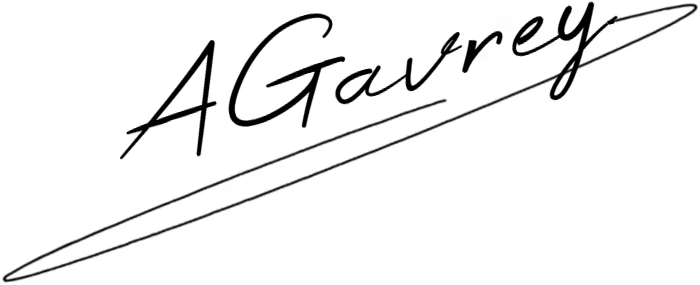Overview of New York State Income Tax
New York State imposes an income tax on all residents and non-residents who earn income within the state. This tax system is designed to ensure that the state's economy is supported by contributions from its citizens, regardless of whether they live in the state or simply work there. The New York State Department of Taxation and Finance administers the tax and ensures compliance. The income tax rates in New York are among the highest in the United States, reflecting the state's extensive public services and infrastructure. Understanding the nuances of this tax is crucial for anyone living or working in New York, as it directly affects take-home pay and overall financial planning.
The New York income tax is structured as a progressive tax, which means that the tax rate increases as the taxpayer’s income increases. This system is designed to be fairer, placing a greater tax burden on those who can afford it while providing relief to lower-income earners. Taxpayers are required to file a New York State income tax return annually, and failure to do so can result in significant penalties. Understanding how to calculate your taxable income, determine your tax bracket, and apply the appropriate credits and deductions can significantly impact your overall tax liability.
Moreover, the income tax system in New York is complex, with numerous brackets and varying rates depending on income level. For instance, in 2023, the rates ranged from 4% for incomes up to $8,500 for single filers to 10.90% for incomes over $25 million. This wide range of tax rates reflects the state’s commitment to a progressive tax system. Additionally, New York residents who earn income from other states may be subject to double taxation unless a tax credit is claimed. This scenario further complicates the filing process, making it essential for taxpayers to stay informed and possibly seek professional help.
Tax Rates and Income Brackets
New York’s income tax system is structured into various tax brackets, each with its own corresponding rate. These brackets are designed to be progressive, with higher earners paying a larger percentage of their income in taxes. As of 2023, there are several income brackets that taxpayers fall into based on their filing status and income level. For single filers, the lowest bracket starts at 4% for incomes up to $8,500, while the highest bracket imposes a tax rate of 10.90% on incomes exceeding $25 million. This steep progression in tax rates reflects the state’s effort to maintain equity in its tax system.
It's important to note that the tax rates differ slightly for married couples filing jointly, heads of households, and qualifying widow(er)s. For example, married couples filing jointly start at a rate of 4% for incomes up to $17,150, with the highest rate of 10.90% applying to incomes above $25 million. This structure ensures that households with higher combined incomes contribute more to the state’s revenue. These tax rates are subject to change, and taxpayers should stay informed about any updates to ensure accurate tax planning and filing.
The following table illustrates the current tax brackets for single filers in New York State as of 2023:
| Income Range | Tax Rate |
|---|---|
| Up to $8,500 | 4% |
| $8,501 to $11,700 | 4.50% |
| $11,701 to $13,900 | 5.25% |
| $13,901 to $21,400 | 5.85% |
| $21,401 to $80,650 | 6.25% |
| $80,651 to $215,400 | 6.85% |
| $215,401 to $1,077,550 | 9.65% |
| $1,077,551 to $5 million | 10.30% |
| $5,000,001 to $25 million | 10.90% |
| Over $25 million | 10.90% |
Deductions and Credits in New York
New York State offers a variety of deductions and credits that can significantly reduce your overall tax liability. These deductions and credits are designed to provide relief to taxpayers in certain situations, such as those with dependent children, low income, or high medical expenses. One of the most significant deductions available to New York taxpayers is the standard deduction, which varies based on filing status. For single filers, the standard deduction is $8,000, while for married couples filing jointly, it is $16,050. These deductions can be a valuable tool in reducing taxable income, thereby lowering the amount of tax owed.
In addition to deductions, New York offers several tax credits that can directly reduce the amount of tax owed. These credits include the Earned Income Tax Credit (EITC), the Child and Dependent Care Credit, and the College Tuition Credit. The EITC is designed to benefit low- to moderate-income working individuals and families, providing a substantial boost to their income. The Child and Dependent Care Credit offers relief to working parents who pay for childcare, while the College Tuition Credit provides a tax break for those paying for higher education expenses. These credits are not only a means of financial relief but also a reflection of New York’s commitment to supporting its residents in key areas of their lives.
To claim these deductions and credits, taxpayers must ensure they meet specific eligibility criteria. For instance, to qualify for the EITC, you must have earned income from employment or self-employment, and your income must fall within the designated limits. Similarly, the College Tuition Credit is only available to residents who have paid for undergraduate tuition at an eligible institution. Understanding these requirements is crucial for maximizing your tax benefits. Failure to accurately report your deductions and credits can result in penalties, including interest on unpaid taxes. Therefore, it is advisable to carefully review your eligibility before claiming these tax benefits.
Filing Requirements and Deadlines
Filing your New York State income tax return is a critical responsibility for all residents and those earning income in the state. The deadline for filing is typically April 15th, aligning with the federal tax filing deadline. However, if April 15th falls on a weekend or public holiday, the deadline is extended to the next business day. It is essential to file your tax return on time to avoid penalties and interest charges. New York State imposes penalties for late filing, late payment, and underpayment of estimated taxes. The penalty for late filing can be as high as 5% of the unpaid tax per month, up to a maximum of 25%.
In addition to filing by the deadline, taxpayers must ensure they have all necessary documentation to accurately complete their tax return. This includes W-2 forms from employers, 1099 forms for additional income, and receipts for deductible expenses. New York also requires taxpayers to file a state return if they are required to file a federal return, even if they do not owe any state taxes. This requirement ensures that all income earned in New York is reported, maintaining the integrity of the state’s tax system.
Taxpayers who are unable to file their return by the deadline may request an extension. New York offers a six-month extension, giving taxpayers until October 15th to file their return. However, it is important to note that an extension to file is not an extension to pay any taxes owed. Taxpayers are still required to estimate and pay any taxes owed by the original filing deadline. Failure to do so can result in penalties and interest charges. For those who need assistance with filing, the state provides various resources, including free filing options for eligible taxpayers and support from Volunteer Income Tax Assistance (VITA) sites.
New York City and Yonkers Income Tax
In addition to the state income tax, residents of New York City and Yonkers are subject to additional local income taxes. These taxes are separate from the state tax and are administered by the local governments. The New York City income tax is imposed on residents of the five boroughs and is based on a taxpayer’s income. The rates for New York City range from 3.078% to 3.876%, depending on income level. Similarly, Yonkers imposes an income tax surcharge of 16.75% of the net state tax on residents and a 0.50% tax on non-residents working within the city. These local taxes are significant and must be factored into overall tax planning.
The New York City income tax is notable because it applies to all residents, regardless of where they earn their income. This means that even if you work outside of New York City, you are still subject to the city’s income tax if you live within the city limits. The tax is calculated based on your New York State taxable income, with no additional deductions or credits specifically for the city tax. For residents of Yonkers, the local income tax surcharge is applied after the state tax has been calculated, effectively increasing the overall tax burden. These local taxes are an important consideration for anyone living or working in these areas.
In addition to these taxes, residents of New York City and Yonkers must also file separate local tax returns. The deadlines for these returns typically align with the state filing deadline, but it is important to check for any specific local requirements. Failure to file a local tax return can result in penalties and interest charges, similar to the state tax. It is also important to note that these local taxes are not deductible on your federal tax return, which can further increase the overall tax burden. Given the complexity of these local taxes, many residents choose to seek professional tax assistance to ensure compliance and accuracy in their filings.
Estimated Tax Payments and Withholding
Estimated tax payments are required for taxpayers who expect to owe at least $300 in New York State income tax after subtracting any withholding and refundable credits. These payments are typically required for individuals who have income not subject to withholding, such as self-employment income, rental income, or investment income. New York requires estimated tax payments to be made quarterly, with due dates in April, June, September, and January. Failure to make these payments or underpaying estimated taxes can result in penalties and interest charges. The penalty for underpayment is calculated based on the amount of the underpayment and the period of the underpayment.
To avoid penalties, taxpayers can either pay 100% of the previous year’s tax or 90% of the current year’s tax through estimated payments. This safe harbor provision allows taxpayers to avoid penalties even if they underpay their estimated taxes, as long as they meet the required payment threshold. Many taxpayers prefer to have taxes withheld from their paychecks to avoid the need for estimated tax payments. However, for those with fluctuating income or significant non-wage income, estimated tax payments may be necessary to avoid a large tax bill at the end of the year.
Employers in New York are required to withhold state income tax from employees’ paychecks. The amount withheld is based on the employee’s income, filing status, and the number of allowances claimed on their Form IT-2104. It is important for employees to accurately complete this form to ensure the correct amount of tax is withheld. Under-withholding can result in a large tax bill at the end of the year, while over-withholding can reduce take-home pay unnecessarily. Employees can adjust their withholding at any time during the year by submitting a new Form IT-2104 to their employer. This flexibility allows employees to adjust their withholding to reflect changes in their financial situation, such as marriage, the birth of a child, or a significant change in income.
Tax Compliance and Penalties
Compliance with New York State’s income tax laws is essential to avoid penalties and interest charges. The state imposes strict penalties for non-compliance, including penalties for late filing, late payment, and underpayment of estimated taxes. The penalty for late filing is 5% of the unpaid tax per month, up to a maximum of 25% of the unpaid tax. In addition, the state imposes a late payment penalty of 0.5% per month on any unpaid taxes. These penalties can quickly add up, making it essential for taxpayers to file and pay their taxes on time.
In addition to penalties, the state also charges interest on any unpaid taxes. The interest rate is determined by the Commissioner of Taxation and Finance and is compounded daily. This means that the longer a tax debt remains unpaid, the more it will cost the taxpayer in interest charges. To avoid these additional costs, it is important to pay any taxes owed as soon as possible. New York State offers several payment options, including online payment through the state’s website, payment by mail, and payment by electronic funds transfer.
For taxpayers who are unable to pay their tax bill in full, New York State offers installment payment agreements. These agreements allow taxpayers to pay their tax debt over time, typically in monthly installments. However, interest and penalties will continue to accrue on the unpaid balance, so it is generally in the taxpayer’s best interest to pay the debt as quickly as possible. To qualify for an installment agreement, taxpayers must demonstrate that they are unable to pay the full amount of tax owed. The state will review the taxpayer’s financial situation to determine the terms of the agreement, including the monthly payment amount and the length of the agreement.
Common Tax Pitfalls and How to Avoid Them
Navigating the complexities of New York State income tax can be challenging, and there are several common pitfalls that taxpayers should be aware of. One of the most common mistakes is underestimating the amount of tax owed. This can happen when taxpayers fail to account for all sources of income, such as investment income, rental income, or self-employment income. It is important to accurately report all income on your tax return to avoid underpayment penalties and interest charges. Additionally, taxpayers should ensure that they are taking advantage of all available deductions and credits to reduce their tax liability.
Another common pitfall is failing to file a tax return on time. Missing the filing deadline can result in significant penalties, including a penalty of 5% of the unpaid tax per month, up to a maximum of 25%. To avoid this penalty, taxpayers should file their return by the April 15th deadline, even if they are unable to pay the full amount of tax owed. Filing an extension can provide additional time to file, but it does not extend the deadline to pay any taxes owed. Taxpayers should also be aware that New York State requires a separate state tax return, in addition to the federal return.
Lastly, taxpayers should be cautious of claiming deductions or credits that they are not entitled to. New York State has strict rules regarding eligibility for deductions and credits, and claiming an ineligible deduction or credit can result in penalties. For example, to claim the Earned Income Tax Credit (EITC), taxpayers must meet specific income and filing status requirements. Similarly, the College Tuition Credit is only available to residents who have paid for undergraduate tuition at an eligible institution. Taxpayers should carefully review the eligibility criteria for any deductions or credits they plan to claim and ensure that they have the necessary documentation to support their claims.
Professional Assistance and Resources
Given the complexity of New York State income tax, many taxpayers choose to seek professional assistance to ensure compliance and accuracy in their filings. Tax professionals, such as certified public accountants (CPAs) and tax attorneys, can provide valuable guidance on tax planning and filing. They can also help taxpayers navigate complex tax issues, such as multi-state taxation, business income, and estate taxes. Additionally, tax professionals can represent taxpayers in audits or disputes with the New York State Department of Taxation and Finance, providing peace of mind and expertise in resolving tax issues.
For taxpayers who prefer to file their own returns, New York State offers a variety of resources to assist with the filing process. The state’s website provides detailed information on tax rates, deductions, credits, and filing requirements. Taxpayers can also use the state’s online filing system, which allows them to file their return electronically and receive a confirmation of receipt. For eligible taxpayers, the state offers free filing options through the Free File program, which provides access to online tax software for filing state and federal returns. Additionally, the state offers support through Volunteer Income Tax Assistance (VITA) sites, which provide free tax preparation services to qualifying individuals.
In conclusion, understanding and complying with New York State income tax laws is essential for all residents and those earning income in the state. The tax system is complex, with numerous rates, brackets, deductions, and credits that can significantly impact your overall tax liability. By staying informed and taking advantage of available resources, taxpayers can ensure that they meet their tax obligations while minimizing their tax burden. Whether you choose to seek professional assistance or file your own return, it is important to approach the tax filing process with care and attention to detail to avoid common pitfalls and ensure compliance with the state’s tax laws.
Evaluation of IQTaxHub
Pros
Cons

August 13, 2024 at 12:29 a.m.
September 19, 2024 at 3:45 p.m.

